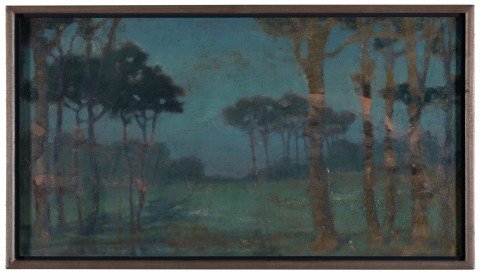Born April 24, 1889 in Jackson, Michigan, Vern Breitmayer was one of five sons of William and Mary (Siegrist) Breitmayer. Always drawing, he found his initial attempts directed toward illustrations for the "Reflector," his Jackson High School yearbook. In the summer of 1907 he went to Detroit to study with John Wicker at the Detroit Art Academy. Wicker, trained at the Ecole des Beaux-Arts in Paris, had been appointed an instructor there in 1903 after having spent seven years abroad.
In the fall of 1907 Breitmayer enrolled at the Pennsylvania Academy of Fine Arts. There his teachers included Charles Grafly, a noted sculptor; William Merritt Chase, considered one of the best instructors of American Impressionism; and Hugh Breckenridge, who undoubtedly had the greatest influence in the use of color in his artwork. In 1910 Breitmayer was awarded the Thouron Prize for Composition as well as a Fellowship at the Academy.
Breitmayer also traveled to Paris, enrolling for a time in the classes of Canadian Percival Tudor-Hart, a noted color theorist who taught a musical system of color harmony.
Returning home to Jackson, Michigan, the artist found employment at this father's furniture store while also pursuing a career as an artist. He began exhibiting his work locally, having a one-man show with the Jackson Art Association at the Public Library in 1915. He also exhibited in Chicago, Philadelphia, and at the Detroit Institute of Art. The artist spent many enjoyable summers in Charlevoix, Michigan, where he developed his talent for watercolors. In the 1940's he found employment with the Ford Motor Company as a Design Engineer. Upon retirement he moved to Santa Cruz, California, where he became a popular member of the Santa Cruz Art League. Breitmayer died of a heart attack on January 29, 1966.

